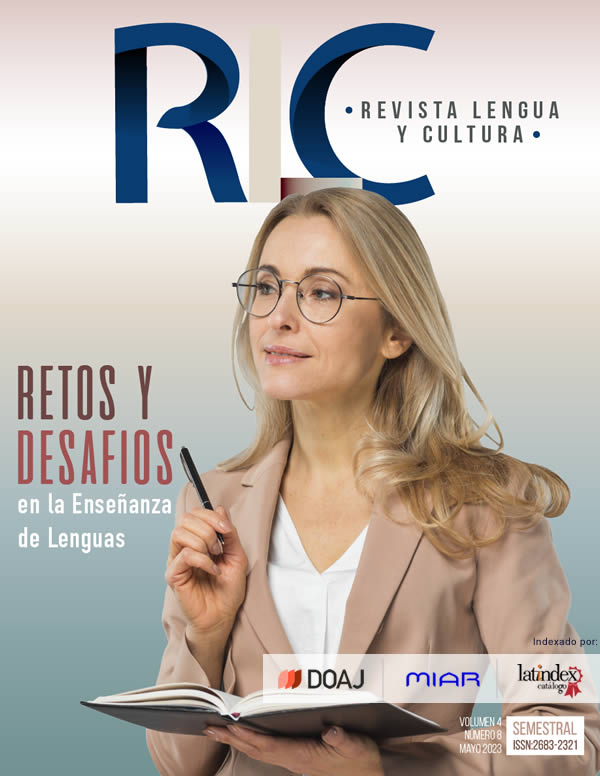Films et séries, des outils à valoriser dans le processus enseignement apprentissage en classe de FLE
Abstract
A relatively recent international trend within new massive cultural practices is the predominance and democratization of audiovisual
streaming platforms; one of the current challenges of teaching is to approach these new tools and contents. Series and movies are
very accessible current pedagogical resources that can easily be integrated in French as a foreign language classes. On any
audiovisual platform, a variety of French-language series and fiction or non-fiction films are available in the original language.
These cultural audiovisual products therefore become an attractive pedagogical resource for the students and allow us to bring our
learners closer to an authentic document in cultural and linguistic immersion in addition to going beyond traditional learning and
fostering the development of cultural and intercultural competences. It also allows the students to leave traditional learning for an
unstructured one that is related to social life and hobbies. With the aforementioned in mind, the introduction of these types of
contents is intended to increase intrinsic motivation and to encourage more interest in the language from the learners. Relying on
materials close to our audiences creates more bonds with them, anchors the contents to their own reality, and fosters their own self-
learning of the language.
Downloads
References
Klapisch, C. (Réalisateur). (2015). Dix pour cent [Série]. Mon Voisin Productions, Mother Production.
Arts visuels et cinéma. (s. f.). Réseau Canopé. https://www.reseau- canope.fr/arts-visuels/cinema.html
Berest & Gobert, A. & F. (Réalisateurs). (2019). Mytho [Série]. Unité de production.
Bourdier, P. (2009). Les enseignants de français face au cinéma : un problème de représentation ?. Le français aujourd'hui, 165, 51-61. https://doi.org/10.3917/lfa.165.0051
Bourdieu, P. (1979). Les trois étapes du capital culturel. Actes de La Recherche En Sciences Sociales, 30, 3–6.
Dossiers cinéma. (s. f.). CNC. https://www.cnc.fr/cinema/dossiers
Brougère, G. (2009). Chapitre 9. Loisirs et apprentissage. Apprendre de la vie quotidienne, 119. https://doi.org/10.3917/puf.broug.2009.01.0117
Burton, T. (Réalisateur). (2005). Charlie et la chocolaterie [Film]. Warner Bros, Village Roadshow.
Cameron, J. (Réalisateur). (1997). Titanic [Film]. Paramount Pictures, 20th Century Fox, Lightstorm Entertainment.
Cantera, S. (2022, 11 agosto). Netflix, HBO Max y Disney+ ¿Cuál tiene más usuarios en México? El Universal. https://www.eluniversal.com.mx/cartera/netflix-hbo-max-y-disney-cual-tiene-mas-usuarios-en-mexico
Columbus, C. (Réalisateur). (1990). Home alone [Film]. 20th Century Fox, Hughes Entertainment.
Conseil de l’Europe, Cadre européen commun de référence pour les langues : apprendre, enseigner, évaluer – Volume complémentaire, Éditions du Conseil de l’Europe, Strasbourg, 2021, pp. 82-96. www.coe.int/lang-cecr
Corbijn, A. (Réalisateur). (2019). Depeche Mode: Spirits in the forest [Documentaire]. Trafalgar Releasing.
Cuq, J., & Gruca, I. (2017). Cours de didactique du français langue étrangère et seconde: 4e édition. Presses Universitaires Grenoble.
Dion, C. (1997). My heart will go on [Chanson]. Dans Let's Talk About Love. Epic.
Dolan, X. (Réalisateur). (2014). Mommy [Film]. Metafilms.
El Acervo Fílmico Digital. (s. f.). Acervo Fílmico. https://www.elacervo.com/
IFcinéma A la carte. (s. f.). IF Cinéma. https://ifcinema.institutfrancais.com/fr/streaming/alacarte
Lammler, I. (2018, 13 septembre). L’intérêt du cinéma comme médium pédagogique. Une nouvelle approche de l’enseignement du français au collège. Archive ouverte HAL. https://dumas.ccsd.cnrs.fr/dumas-03892977
Malone, T. & Lepper (1987). Making Learning Fun: A Taxonomy of Intrinsic Motivations for Learning. In Snow, R. & Farr, M. J. (Ed), Aptitude, Learning, and Instruction Volume 3: Conative and Affective Process Analyses. Hillsdale, NJ.
Malle, L. (Réalisateur). (1987). Au revoir les enfants [Film]. Nouvelles Éditions de Films, MK2 Productions, Stella Films, CNC, Sofica Créations, Rai 1.
Meyssonnier S, Pourquoi et comment exploiter le support vidéo authentique en classe de langue étrangère ?, Concours de recrutement : professeur des écoles, IUFM De Bourgogne, Nevers, 2004/2005, p.10. https://www2.espe.ubourgogne.fr/doc/memoire/mem2005/05_04STA00241.pdf
Mubi: Watch and Discover Movies. (s. f.). Mubi. https://mubi.com/
MyFrenchFilmFestival. (s. f.). https://www.myfrenchfilmfestival.com/
Netflix– Watch TV Programmes Online, Watch Films Online. (s. f.). https://www.netflix.com/
Olmo, C. del. (2014, 24 septembre). Cinema’s emotional dimension in the teaching process of French as a foreign language : the cognition-emotion-culture trilogy. Archive ouverte HAL. https://theses.hal.science/tel-01127231
Ozon, F. (Réalisateur). (2010). Potiche [Film]. Mandarin Production.
Pina, A. (Réalisateur). (2017). La Casa de Papel [Série]. Vancouver Media, Atresmedia.
Poiré, JM. (Réalisateur). (1981). Le père Noël est une ordure [Film]. Trinacra Films.
Robert, J. P., Rosen, É., & Reinhardt, C. (2011). Faire classe en FLE: une approche actionnelle et pragmatique. Hachette. 9-10.
Schnapper, D. (2009). Le relativisme culturel : signification et limites. Commentaire, Numéro 128(4), 893. https://doi.org/10.3917/comm.128.0893
Schugurensky, D. (2007b). « Vingt mille lieues sous les mers » : les quatre défis de l’apprentissage informel. Revue française de pédagogie, 160, 13-27. https://doi.org/10.4000/rfp.583
TV5 Monde Plus. Séries, Films, Documentaires Francophones en streaming (s. f.) https://www.tv5mondeplus.com/fr
Vianin, P. (2007). La motivation scolaire: Comment susciter le désir d’apprendre. De Boeck. 13-14.
YouTube Premium. (s. f.). YouTube. https://www.youtube.com/premium
Zamarrón, I. (2022, 9 diciembre). En México ya se consumen más horas de streaming al día que de televisión abierta. Forbes México. https://www.forbes.com.mx/en-mexico-ya-se-consumen-mas-horas-de-streaming-al-dia-que-de-television-abierta/
Copyright (c) 2023 Marika I. Marochian

This work is licensed under a Creative Commons Attribution-NonCommercial-NoDerivatives 4.0 International License.













